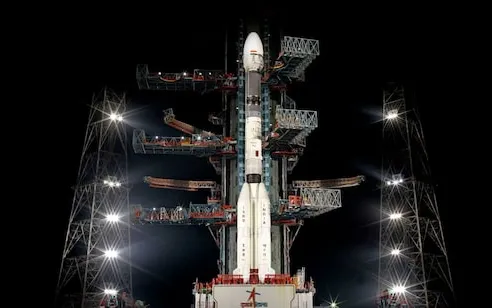IESA President Urges India to Adopt a DARPA-like Approach for Space and Defence Technology Development
The fields of space and defence are experiencing noteworthy advancements in technology, with numerous start-ups making notable strides in the sector. However, the president of IESA asserts that the nation requires a strategy similar to DARPA’s to expedite innovation.
It should be noted that DARPA serves as the central research and development organization of the US Department of Defense.
Indian Electronics and Semiconductor Association (IESA) CEO K Krishna Moorthy said companies currently developing technology solutions for both sectors include Tata Electronics, L&T, Bharat Forge, Alpha Design Ltd and dual-use drone companies.
“Companies such as Skyroot, Agnikul, Dhruva aerospace, Astrome and some of the new companies in the block have done very well in their early years in the challenging aerospace and defense industry. The recent launch of the NaviC receiver developed by Accord Systems and Manjira Systems is truly an achievement,” said Moorthy. Great to develop products for this nascent private industry in its nascent years.
Where are Indian startups located?
Moorthy told ReturnByte that Indian start-ups have been “extremely” successful in the aerospace and defense sectors, while InSpace and the government’s iDex initiatives are beginning to show encouraging results from these companies. He said both the schemes are well defined to enable the growth of Indian start-ups and micro, small and medium industries.
The IESA CEO also said that DRDO has a separate TDF and they encourage startups to work with them as they provide up to Rs 1 crore for critical technology development.
“Startups in space, in particular, have shown that they can approach very complex problems with confidence and produce quality results,” he said. “The efforts of defense startups to develop solutions that meet defense OEMs’ reimbursement obligations are slowly increasing, which is promising.” A very positive sign.”
Murthy also mentioned that there are companies in the private sector now developing complex head-up displays and LRUs for fighter jets, and he believes this will increase exponentially in the coming years, making aerospace and defense startups more attractive.
Talking about the need at the moment, he said, “India’s aerospace and defense systems need materials science to develop dramatically in the country. Traditional wire frames and materials like aluminum are fast being replaced by composites. India’s research and development in this field needs a boost.” .
He said the development of next-generation solid fuels, cryogenic engines, secure defense communication systems and resilient cyber security systems are opportunities for Indian industry to develop, deploy and monetize in the near future. “Battery technology is another area of great industry interest that also has a huge dual-purpose commercial application,” he added.
Development of original technology
According to Murthy, there are now four lists published by defense organizations to be localized, the most recent of which has more than 900 titles published just a few weeks ago.
“If these products are developed and manufactured in India on a commercial scale, they will also find a global market,” he added.
He said: “Let academia and industry work together to develop core technologies, then be adopted and validated by laboratories and government agencies to create deployable systems. It is the product qualification and deployment phase that causes many industries to struggle and stumble.”
“At least in the early stage of the company, it may be wise to use industry-leading engineers to develop solutions for the PoC (Proof of Concept) stage and then the DRDO/ISRO labs will go ahead and create deployable systems.” he says.
Murthy also said that the country has many electronics manufacturing clusters (EMCs) under development in almost all the states. He believes that it may be a good and practical way for the government to point a few of these ESCWA member countries towards space and defence.
He added, “They need private and expensive testing facilities and concentrate them in one or two clusters, and then government bodies like DRDO and ISRO setting up these joint testing facilities in these ESCWA member countries can speed up business establishment and SMEs can succeed more effectively. ” faster”.




